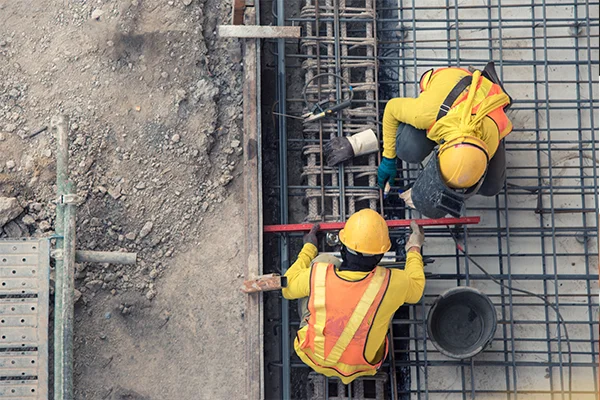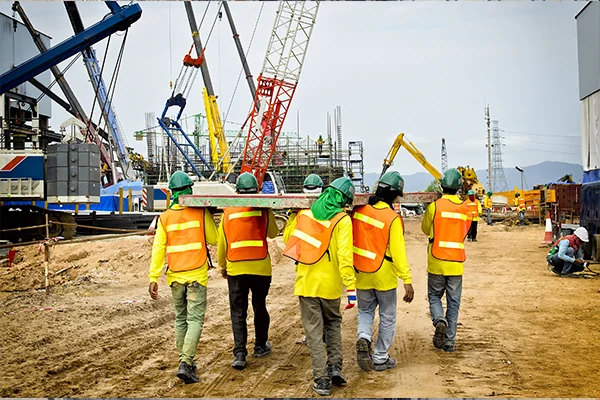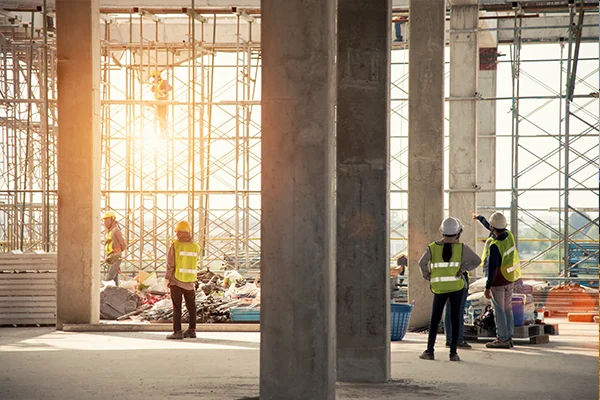
A DAY IN THE LIFE OF CONSTRUCTION WORKER

Urbanisation and economic prosperity of India are paving the way for growing construction industry. It is also leading to increasing demand for more and quality residential and commercial spaces across the country. The human hands involved in building these beautiful projects are that of the construction workers. If you visit an under-construction site, you will see these people toiling in unsafe conditions and building your dream home. The life of a construction worker is a matter of concern despite the many laws and regulations designed specially to take care of them. Let’s tell you a day in the life of a construction worker, the challenges and regulations.
Typical Routine of Construction Worker

They mostly start their day early as they need to report at the site between 8 am to 9 am. So, they mostly eat before coming to the construction site. Once on-site, they discuss the work and payment plan with the contractor and get started. It is essential to know here that most of them are daily wage labourers. When they report to work, they are not sure if there is any work for them, which is why they need to reach on time, negotiate with the contractor and get started. Besides, the typical wages of construction workers vary from INR 200-400 a day. So, if they manage to get work throughout the week (except Sundays, which is mostly off days at the construction site), then they can make anywhere between INR 10000-12000 per month. However, if there is more work available and they do extra shifts, then they can earn around INR 15000 a month.
The Unattended Concerns

As construction workers are daily wage earners, they may go without work for days during the lean periods. Like, during the heavy pollution days in Delhi, most construction workers go unemployed for days as construction work gets paused on government orders.
Each day when these construction workers report to the site, they are not sure if they will be getting work. Besides, their jobs involve risking their lives. Even though there are laws and labourers should get safety clothing and accessories from contractors; however, it seldom gets provided. In situations, where they do get safety workwear, it is often not of the right fitting or accessories are in a broken state. It is for this reason that accidents and deaths are a common sight in Indian construction sites.
The other concern remains the poor sanitation and quality of life. These construction workers usually live in shanties near the project site. These makeshift arrangements lack the basics like a kitchen and toilet.
Respect Construction Workers Deserve

It is time the 8.5 million workers engaged in building, and other construction activities in India deserve your attention and that of the authorities. They are into construction of buildings arduously and meticulously laying cement-sand mortar and deserve the due. Despite the two historic legislations, The Building and Other Construction Workers Act 1996 and the Building and Other Construction Workers Cess Act 1996, which tried to transform the lives of construction workers there is nothing much-taking shape. The bouquet of welfare schemes and special statutory organisations are there and working for the welfare of construction workers. Still, much needs to be done, and the welfare schemes need to translate into reality. If the construction workers abstain or fewer people take up this form of livelihood, India’s fast-changing shape in the global sphere and dreams of modern infrastructure may dampen. India is one the fastest growing economy and the construction industry is an integral part of the economy. The investment in construction accounts for nearly 11% of India’s GDP. India is changing and modernising, and the construction industry is at its boom. So, it is vital to think about construction workers, improve their quality of life and ensure safety at the site.
Subscribe and stay updated!
Get all the updates on our latest articles and client stories. Subscribe now!
Other articles you might like
-
 Interior productsFeb 02 2023| 3.00 min ReadHow To Estimate Your Home Building Cost Home Construction Cost Calculator by tata aashiyana can assist you to determine approximate home construction cost based your choice of materials.
Interior productsFeb 02 2023| 3.00 min ReadHow To Estimate Your Home Building Cost Home Construction Cost Calculator by tata aashiyana can assist you to determine approximate home construction cost based your choice of materials. -
 TIPS AND TRICKSFeb 02 2023| 2.30 min ReadHow To Remove Mold From Your Roof Guide for Algae & Moss Removal on Your Roof · 1. Using Pressure Washers 2. Using Water-Bleach Mixture 3.Using Trisodium Phosphate & More. Click to Know More!
TIPS AND TRICKSFeb 02 2023| 2.30 min ReadHow To Remove Mold From Your Roof Guide for Algae & Moss Removal on Your Roof · 1. Using Pressure Washers 2. Using Water-Bleach Mixture 3.Using Trisodium Phosphate & More. Click to Know More! -
 Home designsFeb 02 2023| 2.00 min ReadSummer Home Maintenance Hacks Summer Home Maintenance Checklist · 1. Repair & Repaint 2. Prepare To Stay Cool 3. Don't Miss The Roof 4. Keep Your Grass Green 5. Check Your Gutters & More
Home designsFeb 02 2023| 2.00 min ReadSummer Home Maintenance Hacks Summer Home Maintenance Checklist · 1. Repair & Repaint 2. Prepare To Stay Cool 3. Don't Miss The Roof 4. Keep Your Grass Green 5. Check Your Gutters & More -
 TIPS AND TRICKSFeb 01 2023| 3.00 min ReadTips to build a new home in 2021 The journey from buying a plot of land to constructing your own home on it is pretty amusing. It takes a long time and requires your complete dedication.
TIPS AND TRICKSFeb 01 2023| 3.00 min ReadTips to build a new home in 2021 The journey from buying a plot of land to constructing your own home on it is pretty amusing. It takes a long time and requires your complete dedication.




